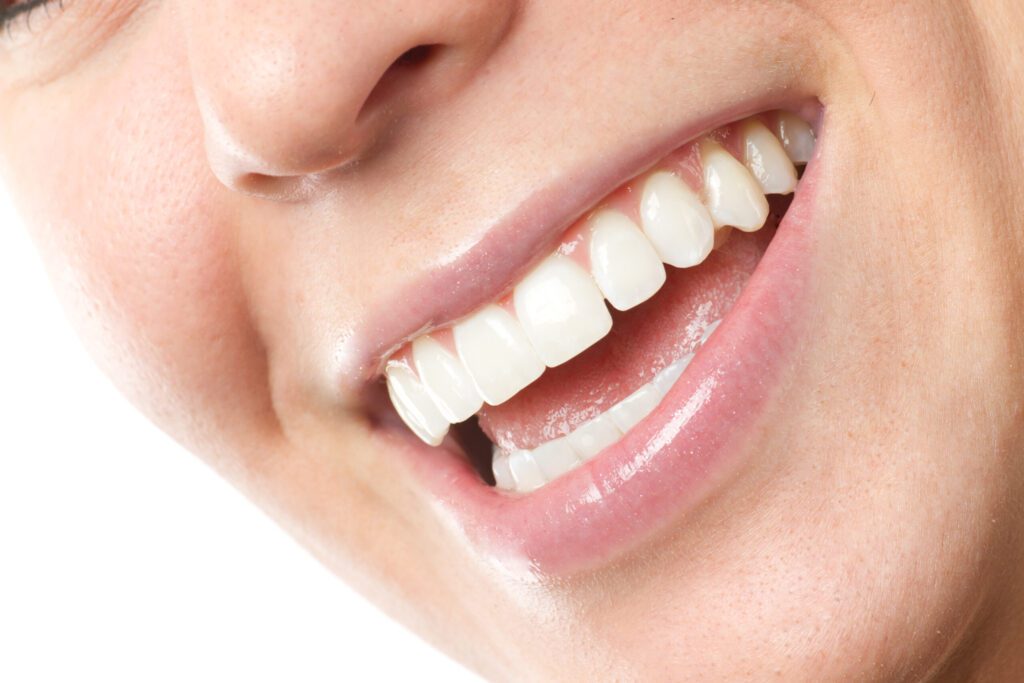You Don’t Have to Settle for a Less-Than-Stellar Smile
by PAMELA PALONGUE
Have you ever wondered about the possibility of improving your smile? If you have, you’re not alone. More than one-third of American adults are unhappy with their smile, according to the American Association of Orthodontists. But who is a candidate for cosmetic dentistry? And what are the realistic expectations of it?
Whether you want to get rid of stains, fill in a gap, fix a broken tooth or whiten your smile, you have options! The practice of dentistry is constantly evolving, and there are many options for improving one of your most important features.
Teeth Whitening
One of the most popular procedures (and least invasive) is the process of teeth whitening or bleaching. Teeth become more yellow as they age, and sometimes teeth can become discolored at younger ages from stains resulting from frequent coffee and tea drinking, and cigarette smoking.
Teeth whitening can be done without a visit to the dentist by using over-the-counter products that employ a whitening agent with hydrogen peroxide and a bleaching mouthpiece to wear. Professional treatment by a dentist will produce much quicker and more dramatic results as they can whiten teeth by as much as eight shades!
One caveat: Too frequent bleaching can cause tooth erosion, so most dentists recommend bleaching only about once per year. You may also experience increased tooth sensitivity and gingival irritation — additional reasons it’s good to see a professional.
Dental Bonding
One the easiest and most affordable cosmetic dental procedures is bonding, which is a tooth-colored resin, with a putty type consistency. It is applied directly to the tooth and then hardened with an ultraviolet light. It can be used to repair cracks, chips, broken teeth and even fix gaps between teeth.
An important selling point with bonding is that it’s quick and painless. However, one of the drawbacks is that it is not a permanent process. Bonding can typically last from three to 10 years and it will need to be touched up. The variance in durability has to do with personal eating habits. If you enjoy eating hard candy or munching on ice cubes, this may not be the procedure for you.
Crowns
For teeth that are too damaged for bonding, a crown may be a good option. A crown fits like a cap over the small bit of tooth that is left along with the root and is cemented into place. It will be sized and colored to match your bite and the surrounding teeth. When properly fitted, a crown will perform just as your normal teeth do. They can be made from resin, ceramic, porcelain and even metal.
One of the disadvantages of a crown is that it is more expensive than many other dental procedures. On the flip side, it can last anywhere from 10 to 30 years.
Veneers
Veneers are extremely thin covers (about the thickness of a fingernail) that are made of ceramic glass, porcelain or resin and that are adhered directly to the front of the tooth, giving it a whiter, more uniform appearance and shape. This can create a dramatic improvement to the appearance of your teeth as it is typically used on several teeth in the front of the mouth for a greatly improved smile.
The cost for a veneer can range from $925 to $2500 per tooth. According to the Consumer Guide to Dentistry, crowns are $1000 to $3500 per tooth, making veneers the less expensive option.
It’s important to keep in mind that veneers are irreversible. According to Polk Dentistry in Winter Haven, the process involves grinding the tooth down so that part of the enamel is removed in order for the veneer to adhere smoothly to the surface. For this reason, they must always be maintained since the front of the tooth has been permanently altered.
Orthodontics
Finally, there is the possibility of orthodontics or braces. Though these are still a popular option for the young, braces aren’t just for kids anymore. They can help to realign an overbite, crooked teeth which may be rotated away from the front, overcrowded teeth, spaces between teeth and serious bite issues.
Braces have evolved from the metal appliances of decades ago, and there are now aligners that are ceramic and tooth-colored so they are barely noticeable. There are also plastic brace appliances that are transparent as well as removable options. These appliances can correct tooth placement for an improved appearance as well as better function and a better bite, which could even help relieve headaches.
If you’ve always wanted a smile that could light up a room, the first step is to schedule an appointment with your dentist to determine the best option for your expectations and budget.
